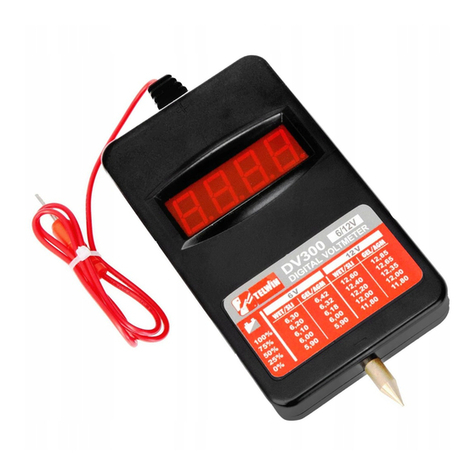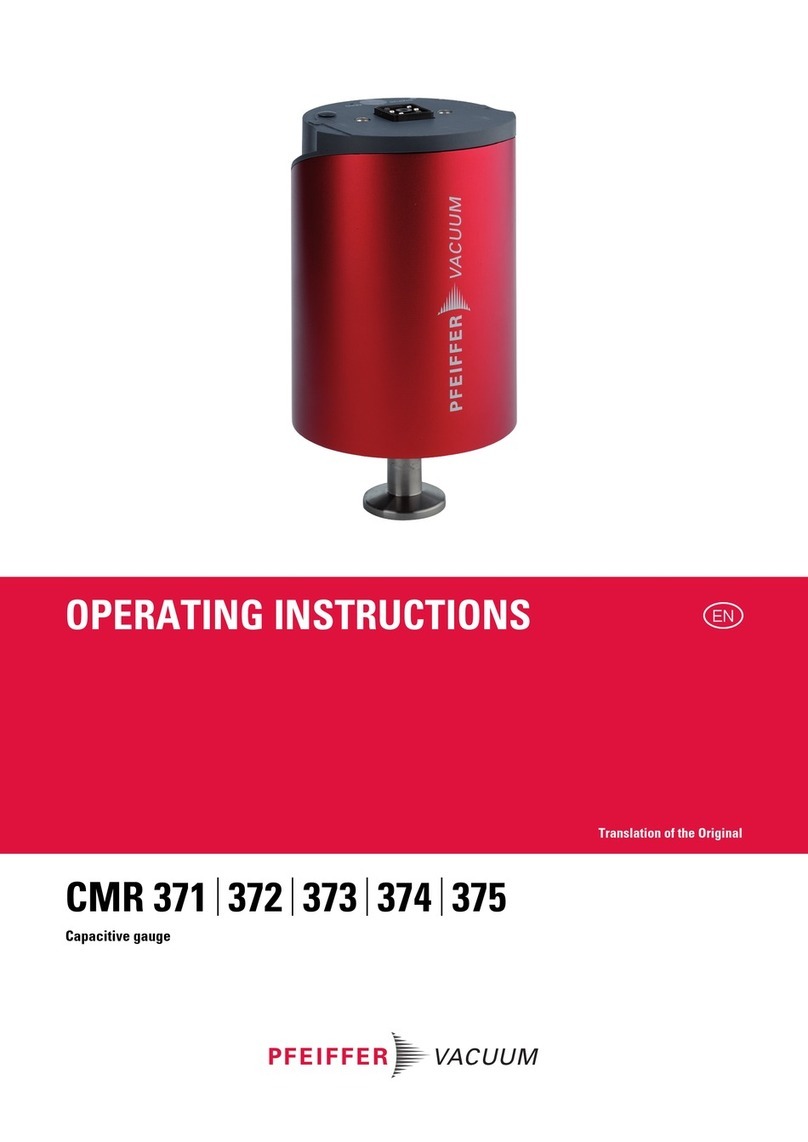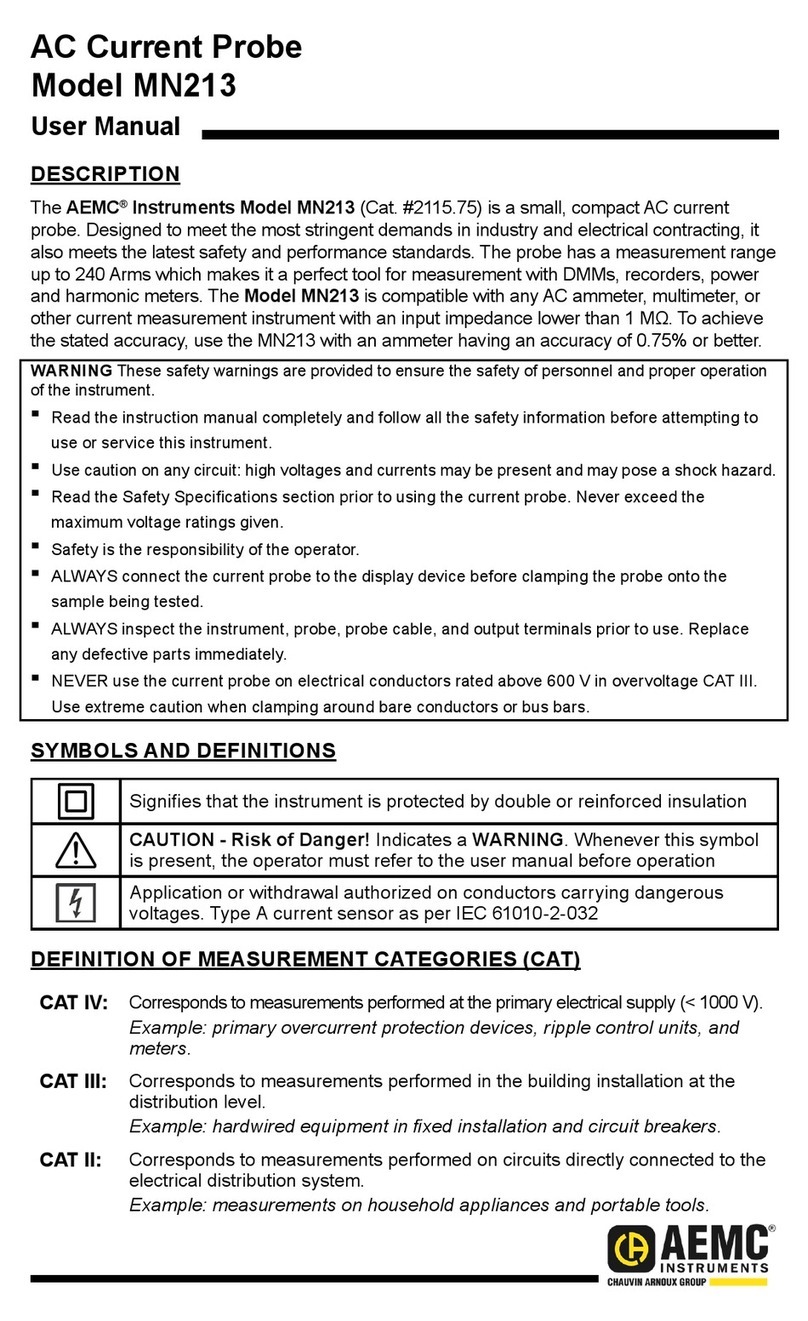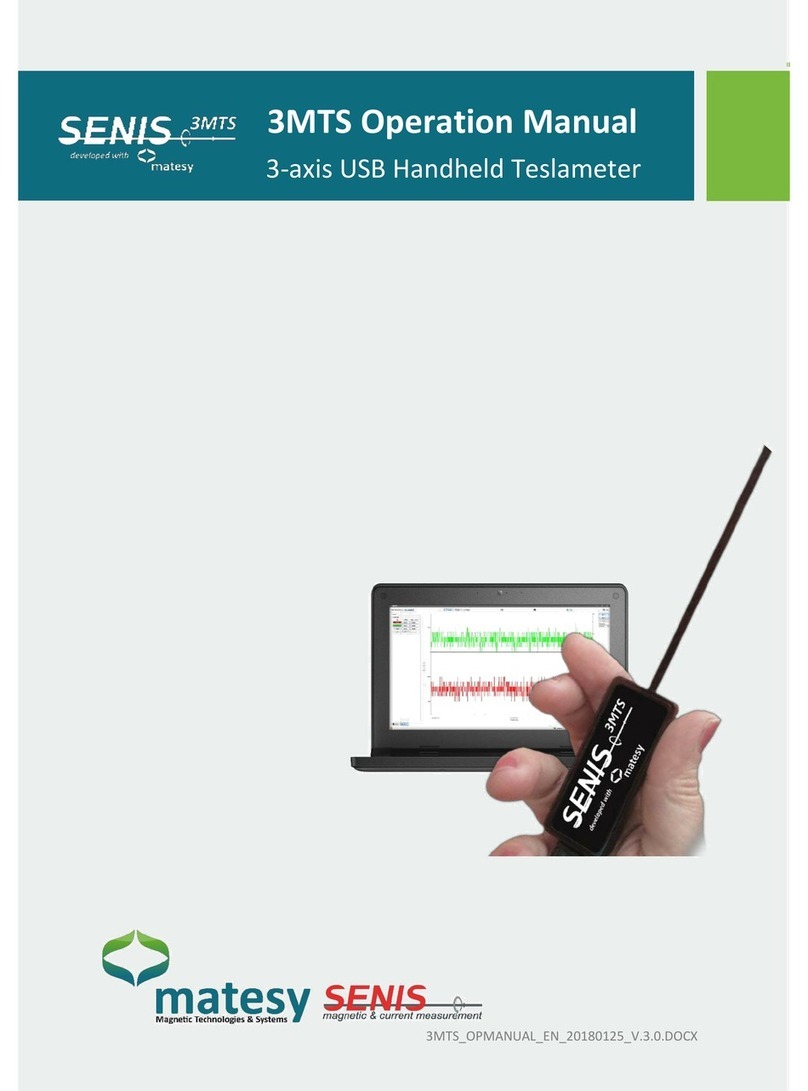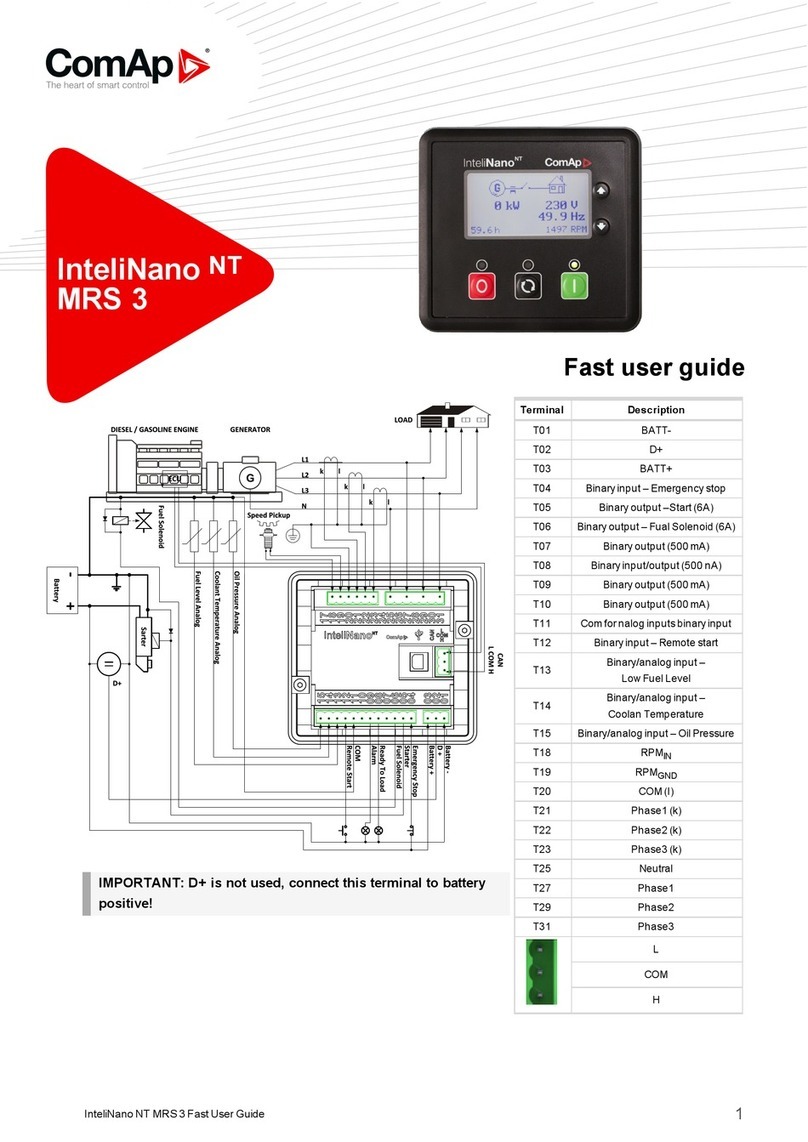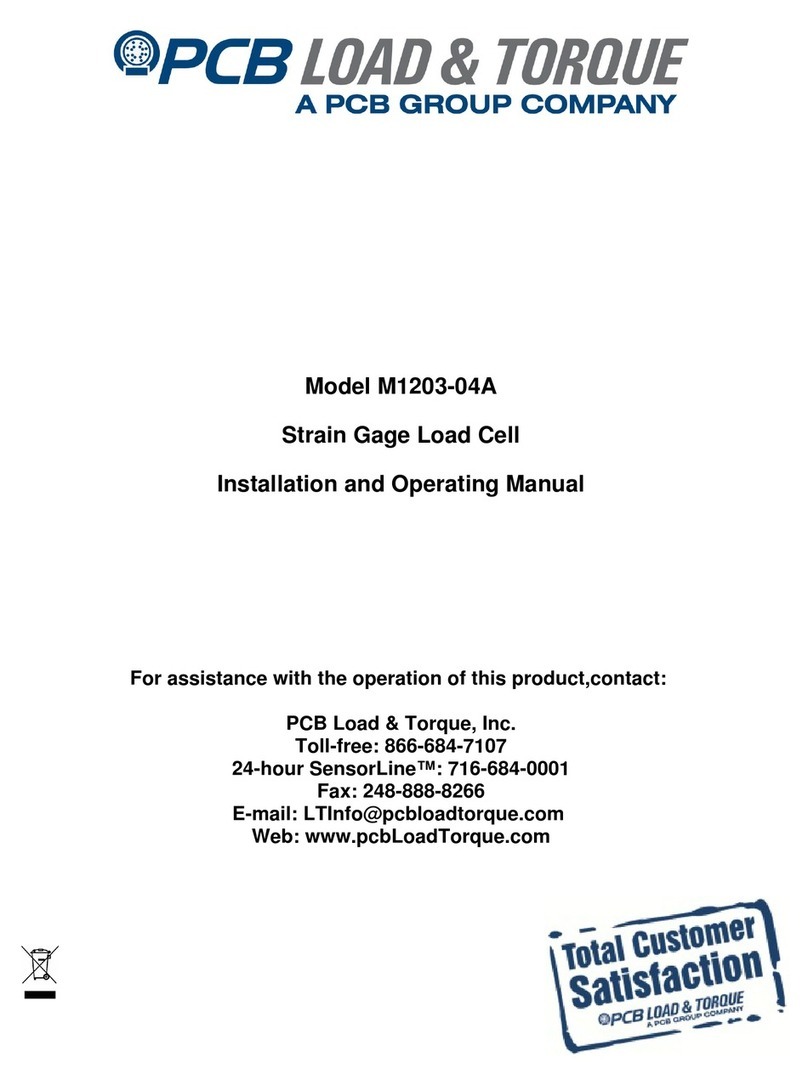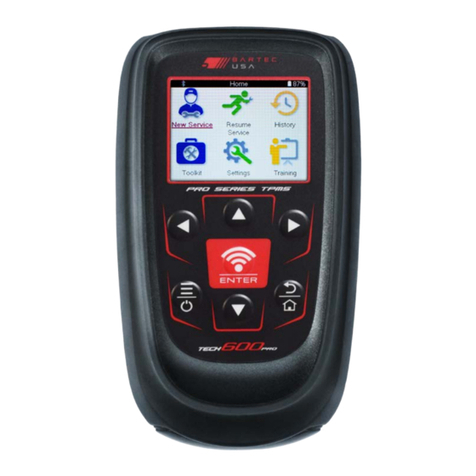Viso Systems LabFlicker User manual

1
VISO SYSTEMS LabFlicker
User Manual
Revision: 23 December 2019

Congratulations on purchasing your new Viso Systems product. Before using this
product, please read our Safety Information.
This manual contains all the feature operating information and troubleshooting
necessary to install and operate your new Viso Systems product. Please review this
manual thoroughly to ensure proper installation and operation.
For news, Q&A and support at Viso Systems, visit our website at
www.visosystems.com
Other manuals in this series, for which the latest versions can be downloaded from
www.visosystem.com, include:
•LabSpion Assembly manual
•Light Inspector User Guide (Software)
•VISO Reference CALI-T50 User guide (calibration light source)

3
Contents
Safety Information........................................................................................................4
Disposing of this Product ..............................................................................................4
Introduction..................................................................................................................4
Product Dimensions......................................................................................................5
Packages and Weight....................................................................................................5
LabFlicker Package Content ..........................................................................................5
Software Installation.....................................................................................................6
Connecting the LabFlicker.............................................................................................7
How to Use the LabFlicker ............................................................................................8
Make a Measurement...................................................................................................9
Basic Measurements.....................................................................................................9
Advanced Measurements ...........................................................................................10
Too Much/Little Light..................................................................................................11
Flicker Measurement Data..........................................................................................12
Import/Remove Flicker Measurements......................................................................14
Specifications..............................................................................................................15

Safety Information
Warning! This product is not for household use.
Read this manual before installing and operating the LabFlicker. Follow the safety
warnings listed below and study all the cautions in the manual. If the device or the
power supply are in any way damaged, defective, wet, or show signs of overheating,
disconnect the power supply from the AC power and contact Viso Systems Service
for assistance. Do not install or use the device outdoors. Do not spray with or
immerse in water or any other liquid. Do not remove any covers or attempt to repair
the controller or the power supply. Refer any service to Viso Systems.
Disposing of this Product
Viso Systems products are supplied in compliance with Directive 2002/96/EC of the
European Parliament and of the Council of the European Union on WEEE (Waste
Electrical and Electronic Equipment), as amended by Directive 2003/108/EC, where
applicable. Help preserve the environment! Ensure that this product is recycled at
the end of its lifetime. Your supplier can give details of local arrangements for the
disposal of Viso Systems products.
Introduction
About the LabFlicker
The LabFlicker expands the capability of the Viso Systems Goniometers series to
measure the light modulations (Temporal Light artefacts) using the same Light
Inspector software. The device is easily connected to the computer via USB and is
automatically detected by the Light Inspector software.
About this document
These guidelines describe the installation process of the LabFlicker and how to use it
with any of Viso Systems’photogoniometers.
© 2007 Viso Systems ApS, Denmark
All rights reserved. No part of this manual may be reproduced, in any form or by any means,
without permission in writing from Viso Systems ApS, Denmark. Information subject to change
without notice. Viso Systems ApS and all affiliated companies disclaim liability for any injury,
damage, direct or indirect loss, consequential or economic loss or any other loss occasioned by
the use of, inability to use or reliance on the information contained in this manual.

5
Product Dimensions
All dimensions in millimetre
Packages and Weight
Shipping Packages
Shipping Dimensions
Shipping Volume
Weight
1. LabFlicker
170 x 130 x 70 mm
0,0015 m3
0,5 kg
Total shipping weight: 0,5 kg.
The shipment is done in a total of 1 package
LabFlicker Package Content
▪1 LabFlicker Unit
▪5 m USB Cable
▪Test Certificate
▪Instructions
115
13 53
A A
B B
C C
D D
E E
F F
4
4
3
3
2
2
1
1
DRAWN
CHK'D
APPV'D
MFG
Q.A
UNLESS OTHERWISE SPECIFIED:
DIMENSIONS ARE IN M ILLIMETERS
SURFACE FINISH:
TOLERANCES:
LINEAR:
ANGULAR:
FINISH: DEBURR AND
BREAK SHARP
EDGES
NAME
SIGNATURE
DATE
MATERIAL:
DO NOT SCALE DRAWING
REVISION
TITLE:
DWG NO.
SCALE:1:1 SHEET 1 OF 1
A4
WEIGHT:
Flicker Assem

Software Installation
Before you can start using the LabFlicker, the free “VISO LIGHT INSPECTOR” software
must be installed on your PC. It is supported on all newer windows platforms. Use
the following link to download the latest version:
http://www.visosystems.com/download-light-inspector/
▪Please make sure the LabFlicker is not connected to the computer during
software installation
▪Make sure to install version 5.28 or later for LabFlicker or the LabFlicker
will not be supported by the Light Inspector
▪Run the .msi file and follow the installation instructions
▪USB drivers are automatically installed. Your measurements are not lost
when updating to a newer version or uninstalling and reinstalling. All
measurements will always remain in your document folder. If you want to
remove all your measurements go to the ‘Light Inspector’ folder and delete
them manually.
Typical folder location:
C:\Users\’Username’\Documents\Viso Systems\Light Inspector
Or if stored in dropbox:
C:\Users\’username’\Dropbox

7
Connecting the LabFlicker
Connect the LabFlicker to your Windows computer using the supplied USB cable.
When connected, the LabFlicker will wait for connection and, when it is ready, you
will see ‘Click to Start’ in the display.
Extending the USB Connection
If, for example, the LabFlicker is used with the LabSpion you may want to keep the
LabFlicker around the LabSpion Base. By using an active USB hub, you can split the
single USB cable to the LabSpion enabling both LabSpion and LabFlicker to be used
on the same USB connection. A USB hub as pictured below can be acquired through
Viso Systems.

How to Use the LabFlicker
A ‘Start/Pause’ button is located on the front of LabFlicker. This is used for starting
and stopping capturing the flicker. On the back you find the sensor at the top. Make
sure not to cover any part of the sensor while measuring and place your hand like
shown below.
To make a measurement, press the Start/Pause button and move the LabFlicker
towards the lamp you want to measure with the sensor facing the lamp.

9
Making a Measurement
To make a flicker measurement, first choose the light measurement you want to add
the flicker measurement to by selecting it in the library window in the Light Inspector
software or choosing a new blank sheet if you just want clean flicker measurement.
When the LabFlicker is connected to the Light Inspector software and the
‘Start/Pause’ button is pressed, a window for the flicker measurement will appear.
The flicker window gives a live feedback of your flicker data.
Basic Measurements
To make a basic measurement, you can use both the button on the LabFlicker and
the button in the flicker window. The basic option is the default.
The basic measurement will measure for 1 second and will calculate:
▪Flicker frequency
▪Flicker percent
▪Flicker index
▪JA8
▪SVM.
Metrics are explained in more detail in section “Flicker Measurement Data” starting
on page 12. Because of the very short measuring time, the measurement can be
done while holding the LabFlicker in the hand.
The sensor needs to be operated within an illuminance level of 1,200 to 11,000 lux. A
bar and text indicator on the LabFlicker display indicates whether this prerequisite is
met (‘OK) or whether illuminance on the sensor is ‘too low’or ‘too high’. Move the
LabFlicker closer or further away from the lamp until you get a ‘OK’ in the display.
When ‘OK’ is shown, press the Start/Pause button again to pause the measurement
and capture the latest flicker values. If you want to redo the measurement, press the
button again to do another measurement.

You will not see the flicker measurement on the home screen on Light Inspector, but
it can be viewed under View-Flicker. You can choose to export the flicker
measurement alone or the complete measurement as a Custom PDF report.
Advanced Measurements
The advanced option creates a much longer measurement of 180 seconds and will
calculate the same things as the basic plus PstLM:
▪Flicker frequency
▪Flicker percent
▪Flicker index
▪JA8
▪PstLM:
▪SVM.
Metrics are explained in more detail in section “Flicker Measurement Data” starting
on page 12. The advanced measurement can only be started from button in the
flicker window. If an advanced measurement is started from the LabFlicker device,
the measurement will be changed back to basic. This is due to the duration of the
measurement and the assumption that no one can hold their hand still for 180
seconds.

11
Too Much/Little Light
If a measurement is done with too much or too little light, this is shown in the VISO
LIGHT INSPECTOR software:
▪Too little light is indicated with a black cross in the Flicker Frame window
▪Too much light is indicated with a red cross in the Flicker Frame window
This cross will also be shown on the LabFlicker device and a new measurement will
be required. Simply press the ‘Start/Pause’ button again. If it is not possible to do a
measurement within the ‘OK’ range of the LabFLicker and the cross is shown both in
the display and on top of the result (in Light Inspector), the result can still be saved,
but the accuracy of this measurement cannot be guaranteed.
You can choose to save this measurement or export it to PDF, but the accuracy of the
result cannot be guaranteed. In the PDF report, the black/red cross will not be
shown.
Remember to save the measurement after the Flicker Window is closed.

Flicker Measurement Data
Flickering light is a problem at low frequencies and can trigger headaches, fatigue
and migraine attacks at higher frequencies - even if the effect is not visible. There are
huge differences in how much people are affected by flickering light.
Flicker and stroboscopic effects are only found to a negligible degree in incandescent
bulbs, as the filament does not get cold between each 50 Hz pulse from the power
supply. Many LED solutions, however, are unsatisfactory in this regard - not because
of the LEDs, but because of poor supply electronics. Particularly dimmed LED
luminaires and some screw-base LED light sources can be very flickering.
Flicker Frequency
Flicker Frequency is the flicker frequency of lamp typically caused by the driver and
supplied AC current.
Flicker Percentage
Flicker percent is a relative measure of the cyclic variation in the output of a light
source (i.e. percent modulation). Sometimes this is also referred to as the
“modulation index.” From the figure
1
below:
𝑃𝑒𝑟𝑐𝑒𝑛𝑡 𝑓𝑙𝑖𝑐𝑘𝑒𝑟 = 100 ∙𝐴 − 𝐵
𝐴 + 𝐵 %
Flicker Index
Flicker index is a “reliable relative measure of the cyclic variation in the output of
various sources at a given power frequency. It takes into account the waveform of
the light output as well as its amplitude”1. The flicker index assumes values from 0 to
1.0, with 0 for steady light output. Higher values indicate an increased possibility of
noticeable lamp flicker, as well as stroboscopic effect. Again, from the figure above:
𝐹𝑙𝑖𝑐𝑘𝑒𝑟 𝐼𝑛𝑑𝑒𝑥 = 𝐴𝑟𝑒𝑎 1
𝐴𝑟𝑒𝑎 1 + 𝐴𝑟𝑒𝑎 2
1
The IESNA Lighting Handbook, 9th Edition, Mark S. Rea, 2000

13
JA8
JA8/JA10 is the test method described by California energy commission in title 24.
This method uses the fluctuation of light from the lighting system and processes the
signal to quantify the flicker percent below a given cut-off frequency. Signal
processing is used to remove high frequency components above the cut-off
frequency.
Flicker FFT and new flicker metrics
Flicker Index and Flicker Percent are not suitable to describe the effect of light
modulations of human perception. E.g. 100% flicker at 1,000 Hz flicker frequency will
result in a very high flicker index but at 1,000 Hz humans will generally not be
affected by flicker, so ‘Percent Flicker’ and ‘Flicker Index’ will not describe human
perception of stroboscopic effects. The latest research in what is collectively referred
to as 'Temporal Light Artifacts' distinguishes three different effects: flicker (static
light sources), stroboscopic effects (moving light sources) and phantom array effects
(eyes moving relative to the light source). For the first two, good metrics for the
effect on people has been established: the two indices PstLM and SVM.
The flicker FFT graph shows the different flickering frequencies represented in the
light produced by the AC supply combined with the used light source and driver. The
SVM threshold curve can be seen in the Flicker FFT graph above and what is below
the red SVM is not visible to the human eye.
SVM - ‘Stroboscopic visibility measure’
Invisible flicker / stroboscopic effects typically occur in the frequency range from 80
Hz to 2,000 Hz and are measured by the SVM measurement method (the
abbreviation stands for "Stroboscopic Visibility Measure"). SVM quantifies the strobe
effect that may occur in connection with moving objects and a light modulation.
Above 2000 Hz there is usually no risk of strobe effects. SVM is based on several
parameters like: Intensity, flicker Index, frequency etc.
The SVM value can be read as:
▪SVM < 1 Not Visible
▪SVM = 1 Just Visible
▪SVM > 1 Visible
PstLM
Visible flicker typically occurs when the frequency is from 0.3-80 Hz. In this area the
metric PstLM is used (the abbreviation comes from "short term light modulation").
The details are described in IEC / TR 61547-1 and IEC 61000-4-15.
The PstLM values in general can be read as:
▪PstLM <= 1 Good
▪PstLM > 1 Bad
PstLM is measured over a period of 180 seconds or 3 minutes. It is important that the
flicker device is held still during this period. Consequently, the LabFlicker should be
placed on a table or stand in front of the lamp being tested. Generally, is it always
recommended to have the LabFlicker in a static position during all types of flicker
measurements.

Import/Remove Flicker Measurements
If you want the flicker data from one measurement added to another, you first select
the measurement you want the flicker data to be imported to and then open the
Flicker Window. Go to: View –Flicker –Import and choose the measurement you
want to import the flicker data from, close the window and save the measurement
again.
In the Flicker Window at the right bottom, it is also possible to remove the flicker
data from a measurement.

15
Specifications
Physical dimensions
Dimensions (L x W x H)
115 x 53 x 13 mm
Weight
155 g
Shipping Dimensions (L x W x H)
170 x 130 x 70 mm
Shipping weight
500 g
Sampling
Sensor Analog to Digital converter resolution
12 bit
Sensor Analog to Digital sample rate
640,000 sample/s
Software working sample rate (Down sampled to
ensure performance)
40,000 samples/s
Automatic pre-ADC gain levels (Ensuring maximum
dynamic use of ADC)
3 levels
Bandwidth
0 Hz to 5,000 Hz
Photometric
Sensor lux range
1,200 to 11,000 lux
Sensor candela range (at distance from lamp from
0.1 m to 10 m)
12 cd @ 0.1 m
to 1,100,000 cd @ 10 m
Electric
Connection
micro USB
Power
Connection via USB only
5V / 200mA / 1W
Warranty
Warranty period
2 years from delivery
date
Ordering information
LabFlicker
P/N LABFLCK01

At Viso Systems, we design, develop and manufacture OEM- and customer-specific
goniophotometer solutions. Our mission is to support customers with powerful, yet
easy-to-use control and measurement solutions. Products are developed and
manufactured in Copenhagen, Denmark.
Other manuals for LabFlicker
1
Table of contents
Other Viso Systems Measuring Instrument manuals
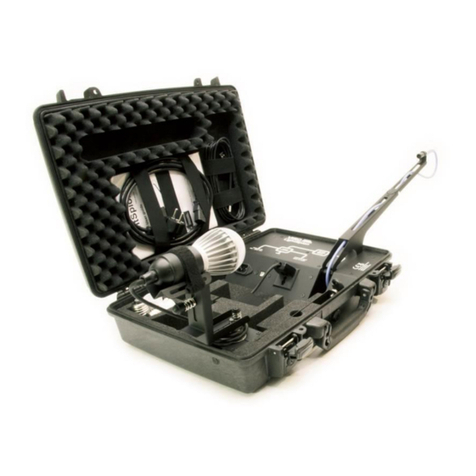
Viso Systems
Viso Systems LightSpion LIGSP001 User manual
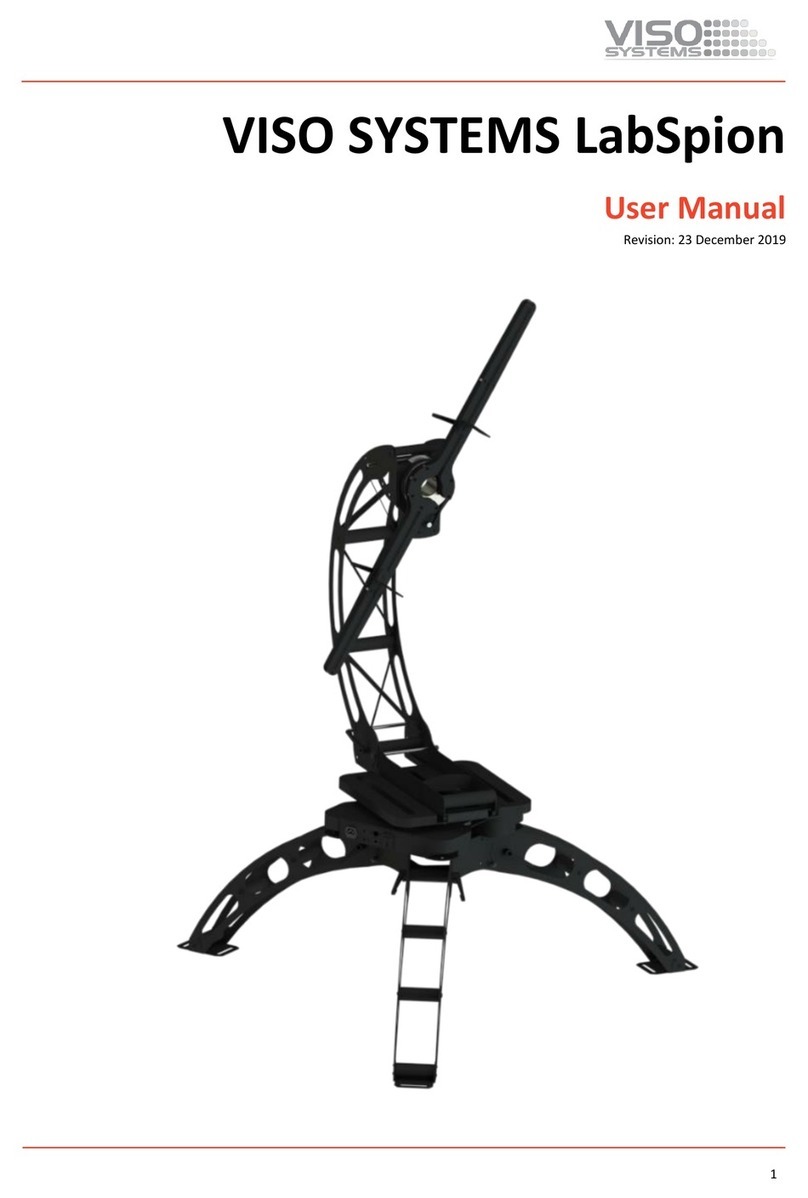
Viso Systems
Viso Systems LabSpion User manual
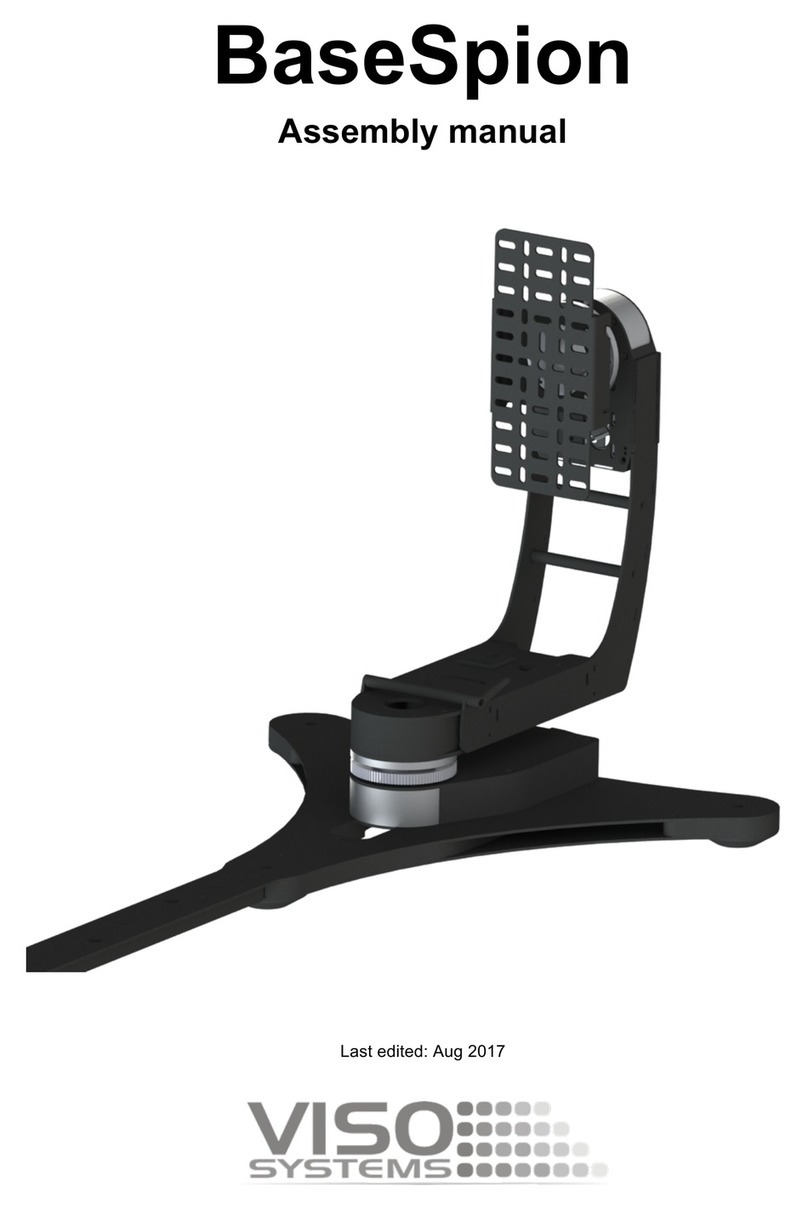
Viso Systems
Viso Systems BaseSpion User manual

Viso Systems
Viso Systems LabSpion User manual
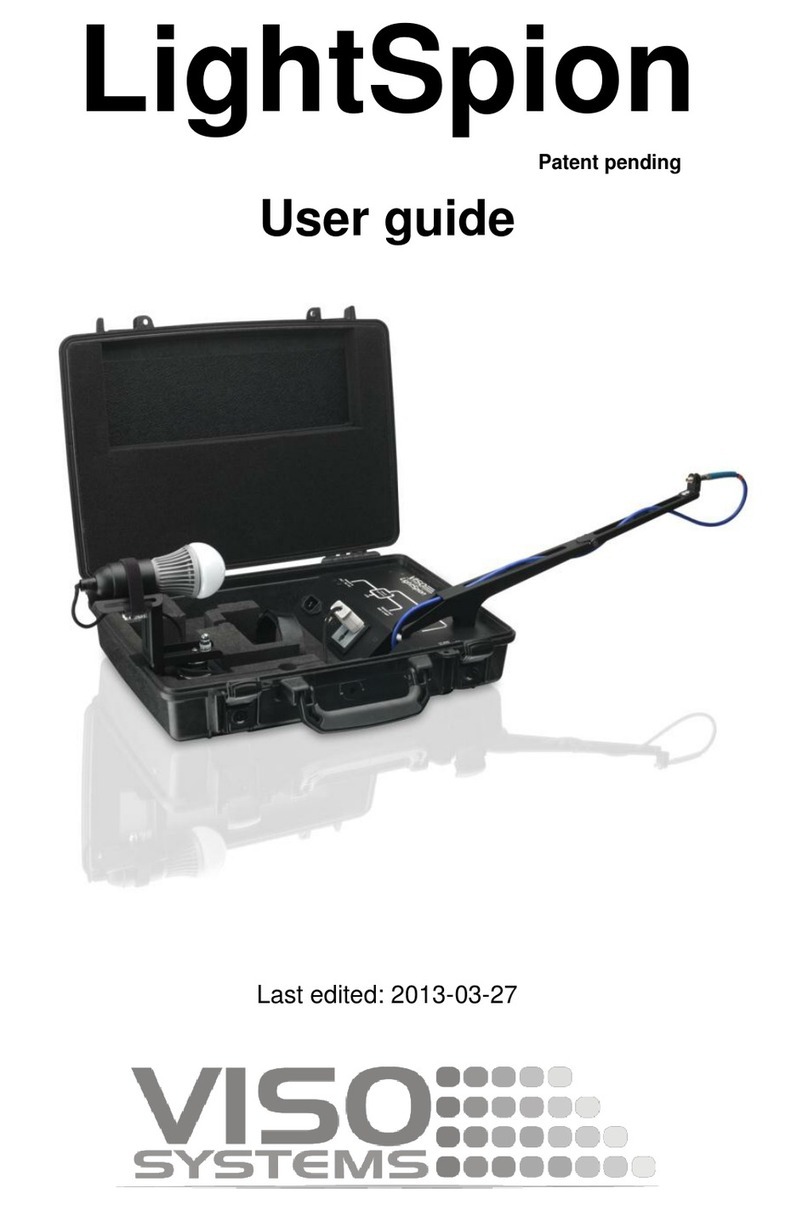
Viso Systems
Viso Systems LightSpion User manual
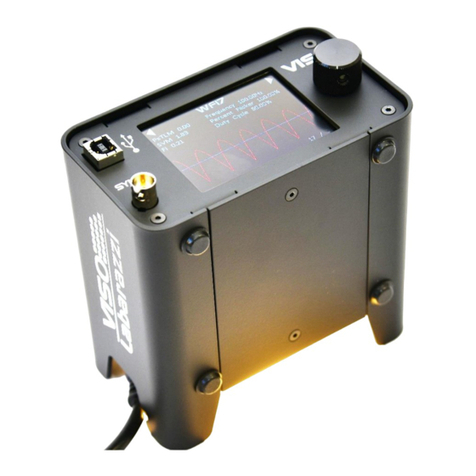
Viso Systems
Viso Systems VISO SYSTEMS Labarazzi User manual

Viso Systems
Viso Systems LabSpion User manual
Popular Measuring Instrument manuals by other brands
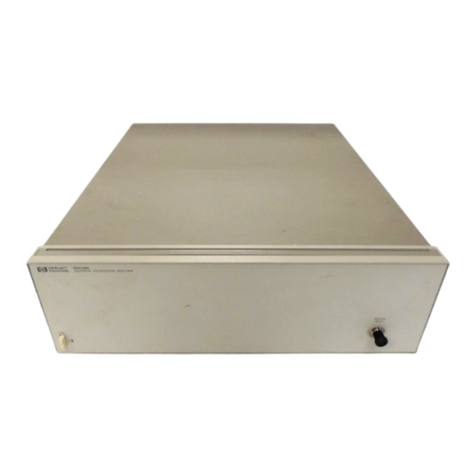
HP
HP 8509A Installation and quick start guide
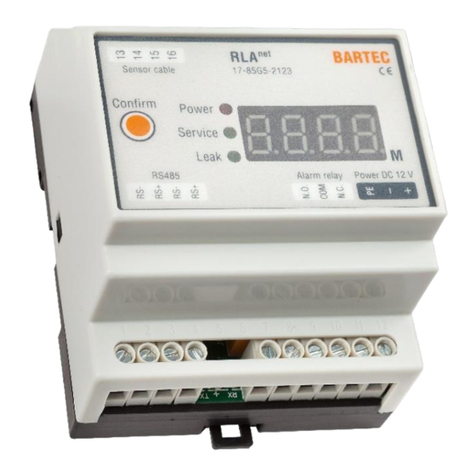
Bartec
Bartec RLAnet 17-85G5-2123 Series Operation and installation manual
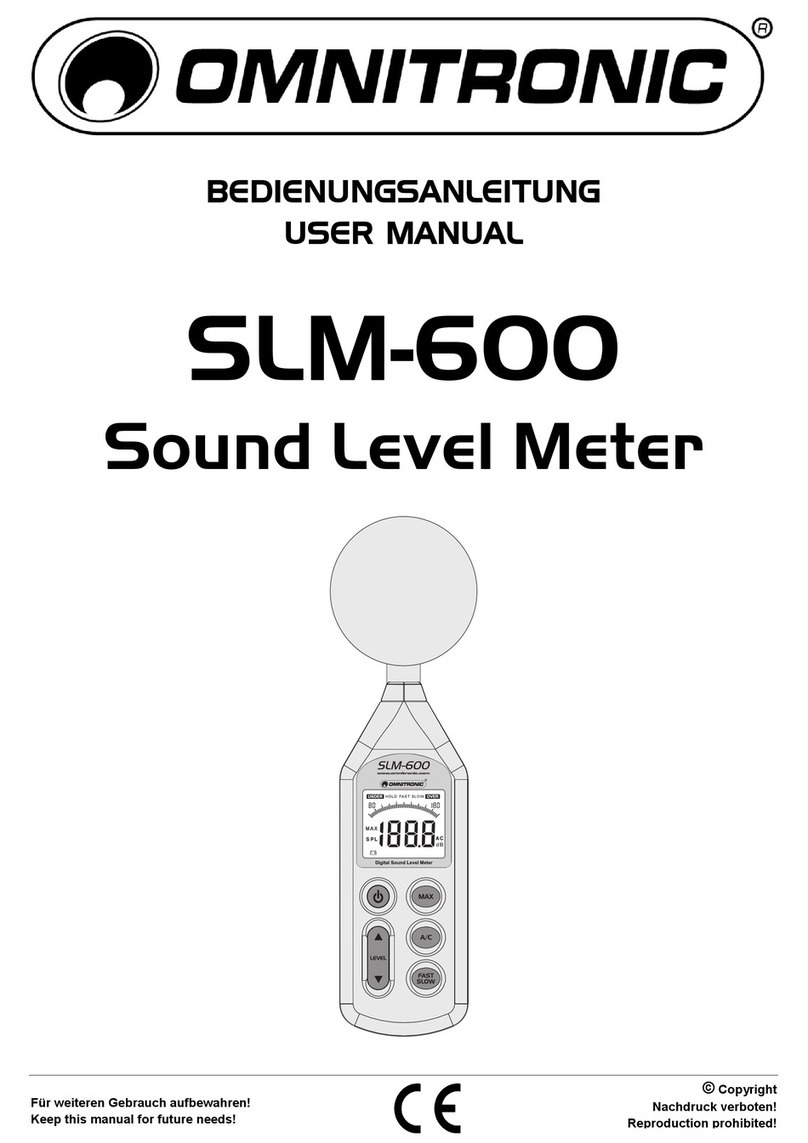
Omnitronic
Omnitronic SLM-600 user manual
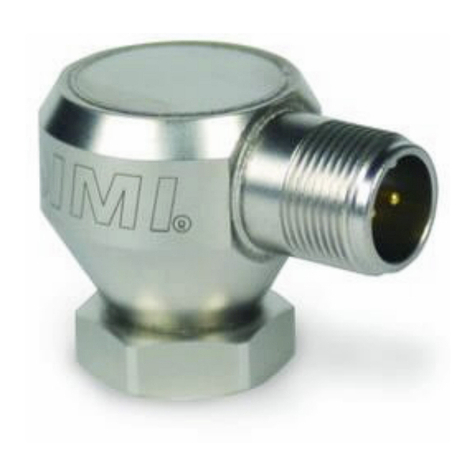
PCB Piezotronics
PCB Piezotronics IMI SENSORS M642A02 Installation and operating manual
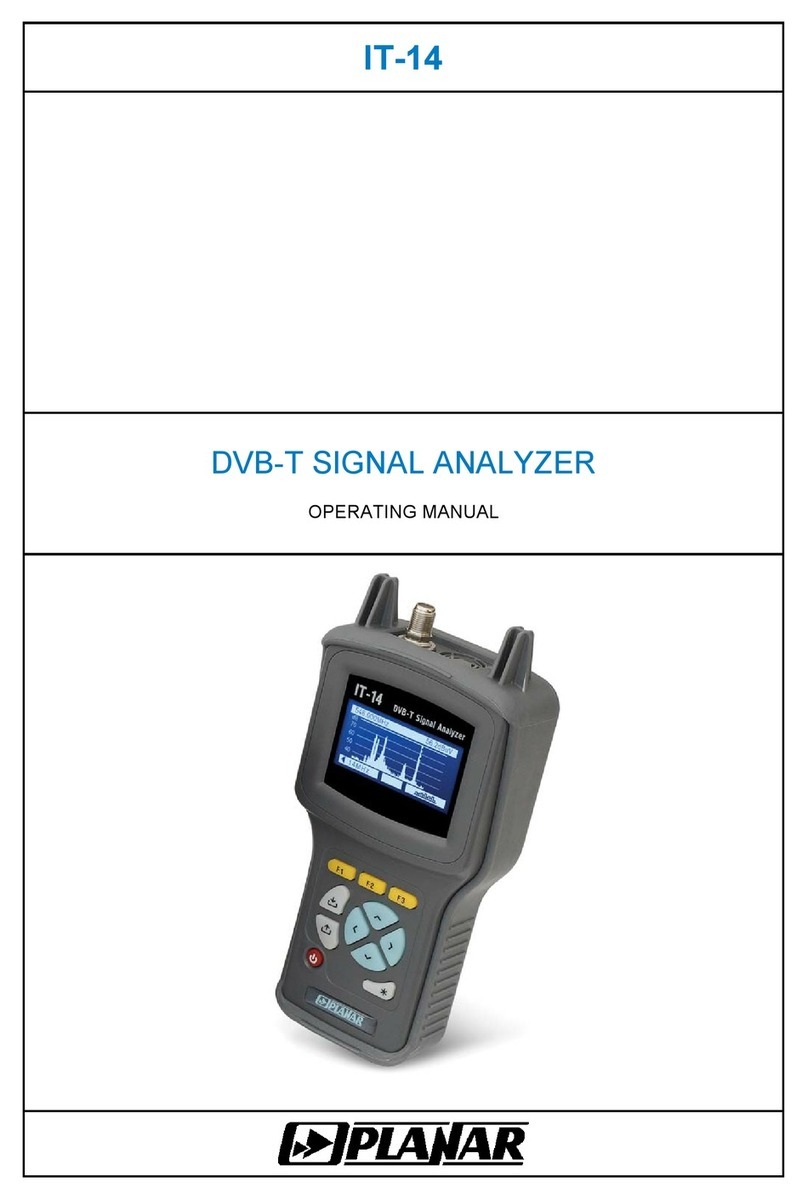
Planar
Planar IT-14 operating manual
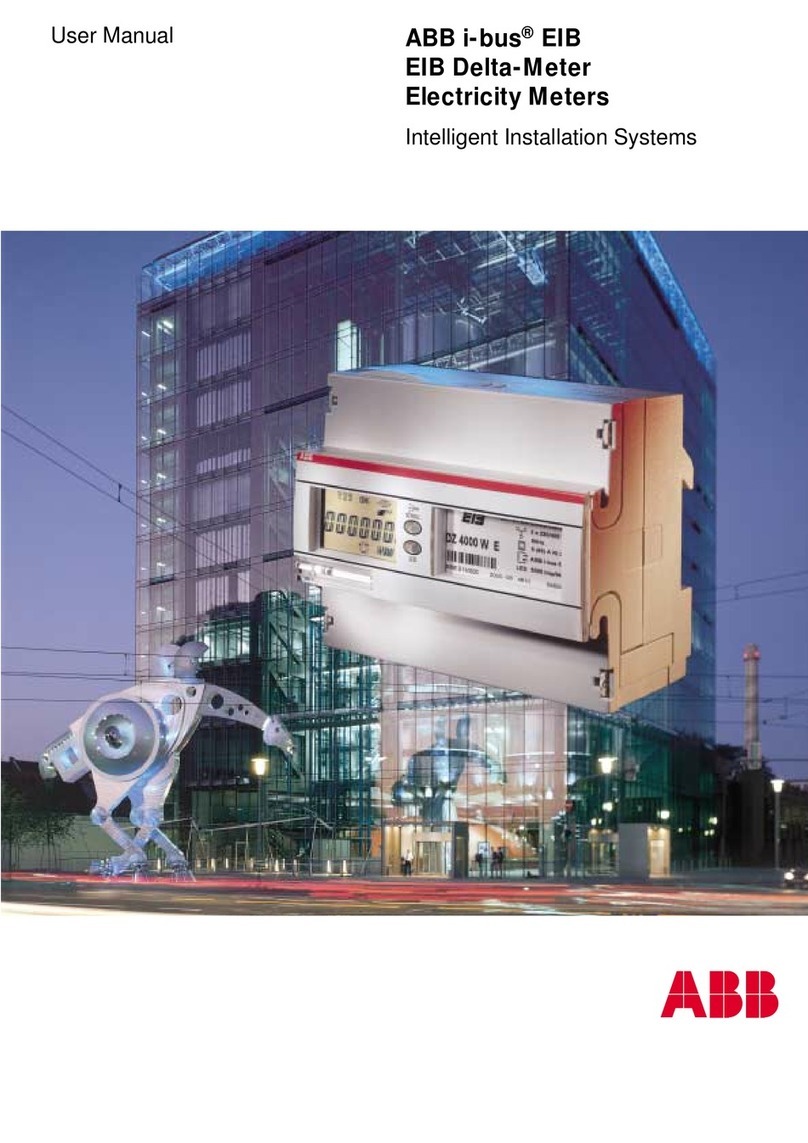
ABB
ABB EIB Delta user manual
